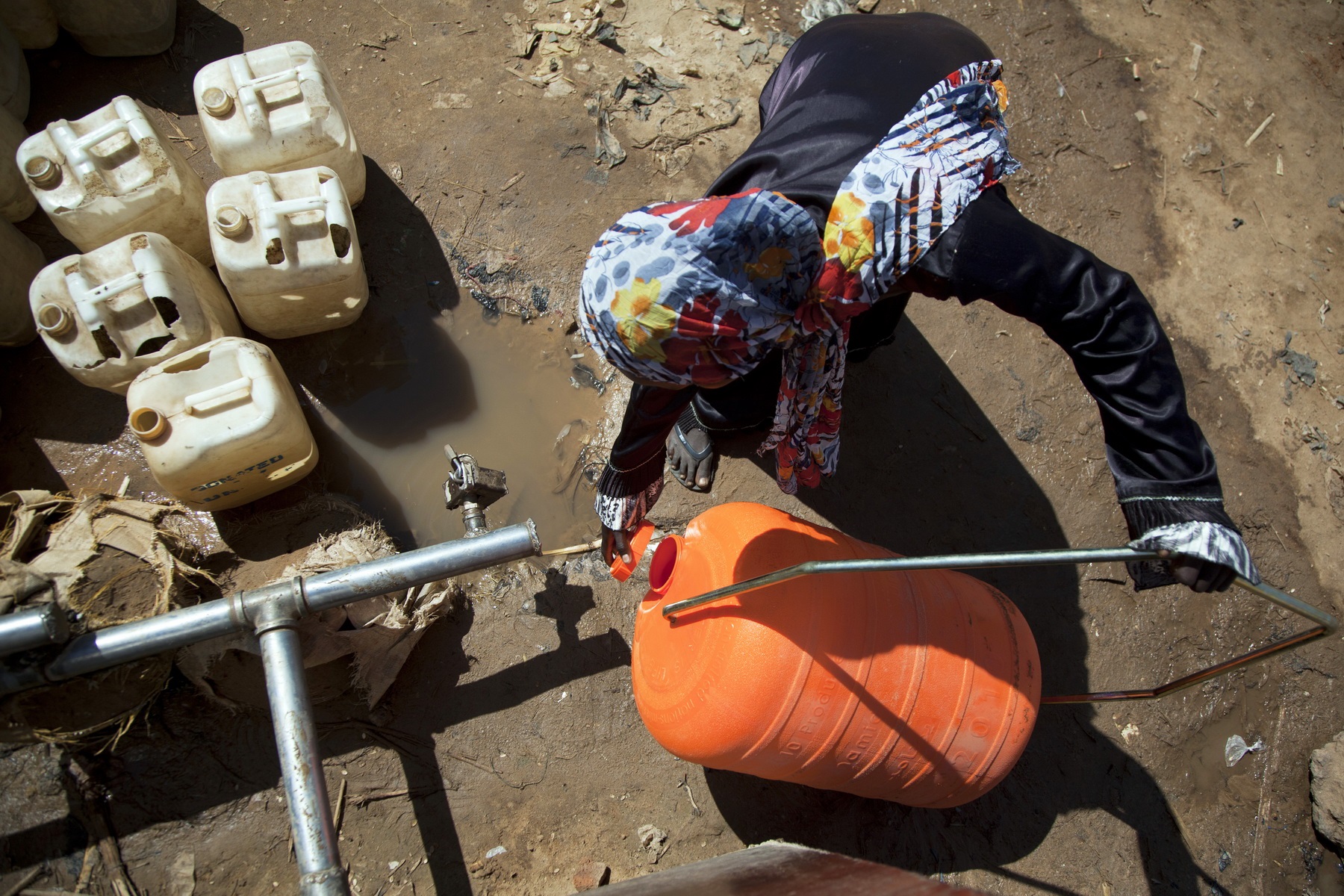How we work
GLAAS provides policy- and decision-makers at all levels with reliable, easily accessible, comprehensive data on water, sanitation and hygiene (WASH) systems, including on governance, monitoring, human resources and finance. GLAAS monitors elements of WASH systems that are required to sustain and extend WASH services and systems to all, and especially to the most vulnerable population groups.
GLAAS country and external support agency surveys

The main objective of GLAAS is to monitor components of WASH systems, including governance, monitoring, finance and human resources necessary to sustain and extend WASH services to all, and especially to the most vulnerable population groups. GLAAS collects information on WASH systems directly from national* governments, and external support agencies (ESAs) through country/territory and ESA surveys. Since 2008, GLAAS cycles have taken place every two to three years.
GLAAS complements and informs other efforts across the WASH sector including the WHO/UNICEF Joint Monitoring Programme for Water Supply, Sanitation and Hygiene (JMP) and the Sanitation and Water for All (SWA) partnership. The JMP provides internationally comparable estimates of progress on drinking-water, sanitation and hygiene at the local, regional and global levels, and GLAAS helps to provide context for these estimates.

WASH accounts

WASH accounts provide a systematic description of financial flows in the WASH sector. WASH accounts show all expenditures for WASH in a country for specific years and aim to answer four key questions:
- What is the total expenditure in the WASH sector?
- What are funds being spent on?
- Who pays for WASH services and how much do they pay?
- Who are the main WASH service providers and how much are they spending?
The TrackFin methodology, developed by WHO, is used to develop WASH accounts through the collection and mapping of WASH financial flows in a comprehensive and comparable manner. The process is aided by the WASH accounts production tool (WAPT), which is a software tool to support the collection, classification and analysis of WASH spending data.
Monitoring the SDG 6 means of implementation

WHO, through GLAAS, is a co-custodian, along with the United Nations Environment Programme (UNEP) and the Organisation for Economic Co-operation and Development (OECD), for monitoring SDG Targets 6.a and 6.b on the means of implementation, which are:
- Target 6.a: By 2030, expand international cooperation and capacity-building support to developing countries in water- and sanitation-related activities and programmes, including water harvesting, desalination, water efficiency, wastewater treatment, recycling and reuse technologies.
- Target 6.b: Support and strengthen the participation of local communities in improving water and sanitation management.
For more information on monitoring SDG 6, see the UN-Water SDG 6 data portal.
Disclaimer: The designations employed and the presentation of the material in this portal do not imply the expression of any opinion whatsoever on the part of WHO concerning the legal status of any country, territory, city or area or of its authorities, or concerning the delimitation of its frontiers or boundaries. Dotted and dashed lines on maps represent approximate border lines for which there may not yet be full agreement. The mention of specific companies or of certain manufacturers’ products does not imply that they are endorsed or recommended by WHO in preference to others of a similar nature that are not mentioned. Errors and omissions excepted, the names of proprietary products are distinguished by initial capital letters. All reasonable precautions have been taken by WHO to verify the information contained in this portal. However, such information is being made available without warranty of any kind, either expressed or implied. The responsibility for the interpretation and use of the material lies with the reader. In no event shall WHO be liable for damages arising from its use. The portal may contain links to resources on external websites. WHO is not responsible for the accuracy or content of any external link. The presence of any resource or external link on the portal does not imply that the resource, or its author or entity, is endorsed or recommended by WHO. These links are provided for convenience only. These external resources may include national policies, plans and strategies in the area of water, sanitation and hygiene systems, which have been provided by some national governments or local authorities in response to a survey (the “published material”). The published material is provided for information and reference purposes only, including to enable a comparative analysis of policies, plans and strategies and to guide future policy development. WHO does not endorse or express an opinion about the published material.
* The term “national” should be understood to refer to countries, territories and areas and does not imply the expression of any opinion whatsoever on the part of WHO concerning the legal status of any country, territory or area.